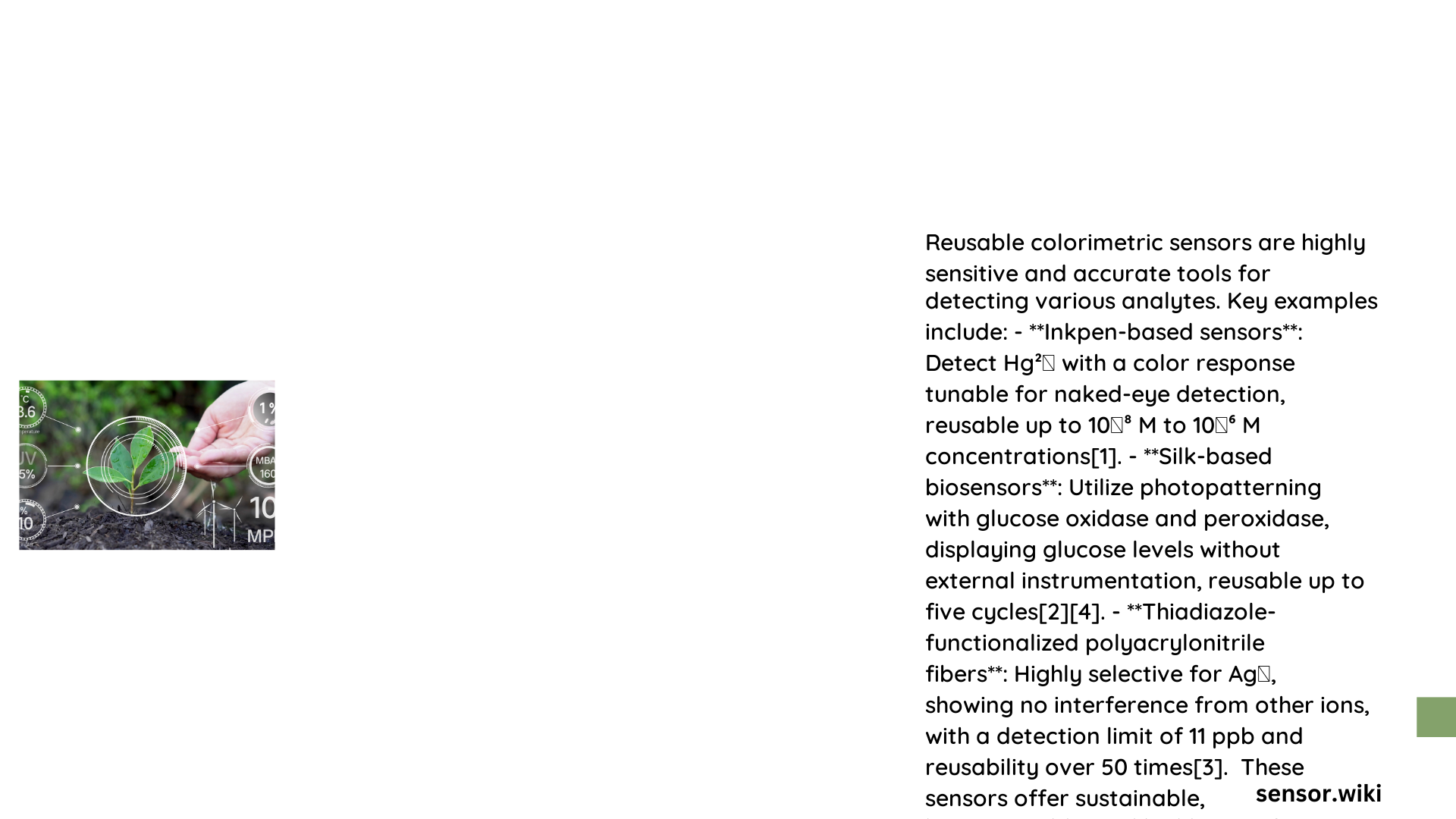Reusable colorimetric sensors represent a groundbreaking technological innovation in analytical chemistry, enabling rapid, visual detection of target molecules through color-changing mechanisms. These advanced sensors leverage sophisticated nanomaterials and chemical interactions to provide precise, cost-effective, and environmentally friendly detection solutions across environmental, food safety, and biomedical domains, revolutionizing how we monitor and analyze complex chemical environments.
What Makes Reusable Colorimetric Sensors Unique?
Reusable colorimetric sensors distinguish themselves through several remarkable characteristics:
Key Performance Characteristics
- High Sensitivity: Detect analyte concentrations as low as 4.0 × 10⁻⁸ M
- Multiple Usage Cycles: Capable of repeated measurements without significant performance degradation
- Visual Detection: Immediate color change for quick qualitative analysis
Detection Mechanism Insights
Chemical Interaction Principles
Reusable colorimetric sensors operate through sophisticated molecular interactions:
- Spirocycle Opening: Rhodamine-based mechanisms trigger color transformations
- Nanomaterial Interactions: Graphene oxide and gold nanoparticles enable selective binding
- Aptamer-Based Recognition: Specific molecular interactions enhance detection accuracy
How Do Reusable Colorimetric Sensors Work?

Sensing Mechanism Overview
| Component | Function | Example |
|---|---|---|
| Receptor | Identifies Target Molecule | Rhodamine Spirocycle |
| Signaling Element | Generates Color Change | Fluorescence Intensity |
| Substrate | Provides Detection Platform | Biodegradable Paper/Nanocomposite |
Detection Performance Metrics
Sensitivity Parameters
- Concentration Range: 4.0 × 10⁻⁸ M to 1.0 × 10⁻⁶ M
- Detection Limit: Approximately 0.8 µg/L
- Reusability: Multiple measurement cycles without significant performance loss
What Are the Primary Applications?
Environmental Monitoring
- Water quality assessment
- Heavy metal detection
- Pollution tracking
Biomedical Diagnostics
- Point-of-care testing
- Biomarker identification
- Rapid disease screening
Food Safety
- Pesticide detection
- Contaminant identification
- Quality control processes
What Technologies Enable Advanced Sensing?
Innovative Detection Platforms
- Graphene oxide nanocomposites
- Gold nanoparticle interactions
- Aptamer-based recognition systems
- Rhodamine spirocycle mechanisms
Advantages of Reusable Colorimetric Sensors
Technical Benefits
- Cost-Effectiveness: Lower per-use expenses
- Environmental Sustainability: Reduced waste generation
- Rapid Detection: Immediate visual results
- High Specificity: Targeted molecular recognition
Challenges and Future Developments
Research Frontiers
- Enhanced sensitivity
- Broader analyte detection
- Improved stability
- Miniaturization of sensing platforms
Conclusion
Reusable colorimetric sensors represent a transformative technology bridging advanced materials science, chemistry, and practical analytical needs across multiple domains.
